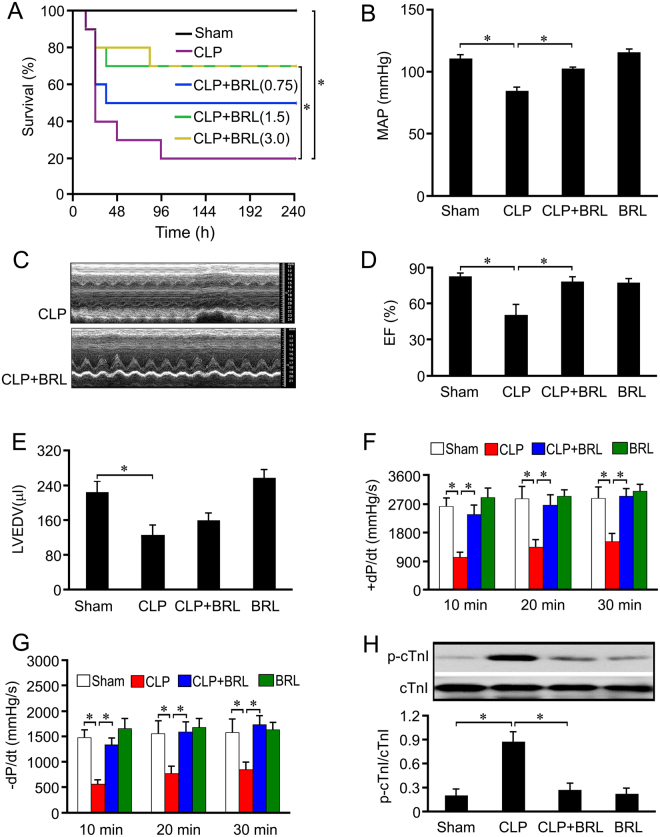Figure 1.
BRL44408 (BRL) therapy improves survival and reverses cardiac dysfunction and hypotension in septic rats. The rats were randomized into sham, cecal ligation and puncture (CLP), CLP+BRL and sham+BRL (BRL) groups. The rats were subjected to CLP or sham surgery and were treated intraperitoneally with either BRL (i.p.) or normal saline 4 h later. (A): A Kaplan-Meier plot indicating that treatment with BRL (1.5 or 3.0 mg/kg) significantly improves the survival of septic rats (n = 10 for each group). (B): The mean arterial pressure (MAP) was measured 20 h after CLP or sham surgery using the tail-cuff method, and BRL (1.5 mg/kg) elevated the MAP in septic rats. (C,D) and (E): Echocardiography evaluation indicated that BRL (1.5 mg/kg) treatment increased left ventricular ejection fraction (EF), but not left ventricular end-diastolic volume (LVEDV) in septic rats. (F) and (G): The hearts were obtained 20 h after CLP or sham surgery and left ventricular function was assessed in a Langendorff apparatus. The maximum rates of the rise (+dP/dt) and fall (−dP/dt) of the left ventricular pressure 30 min after perfusion are shown. BRL (1.5 mg/kg) increased +dP/dt and −dP/dt in CLP rats. (H): Left ventricle samples were obtained for the Western blot analysis 20 h after CLP or sham surgery, and BRL (1.5 mg/kg) inhibited left ventricular cardiac troponin I (cTnI,) phosphorylation (Ser23/24) in septic rats. n = 7 for the sham and the BRL groups, n = 10 for the CLP and the CLP+BRL groups. Statistical significance is shown as *P < 0.05.

